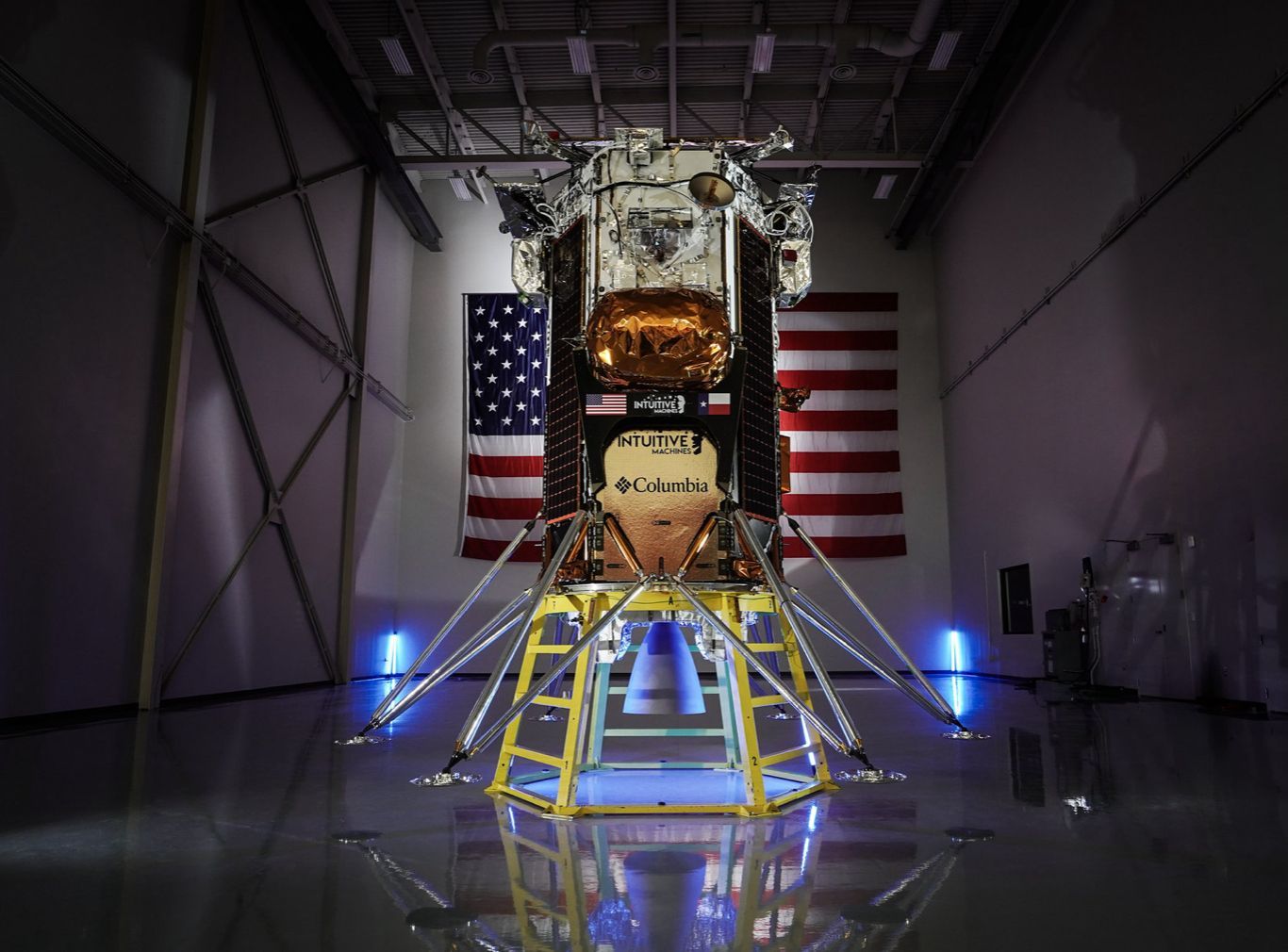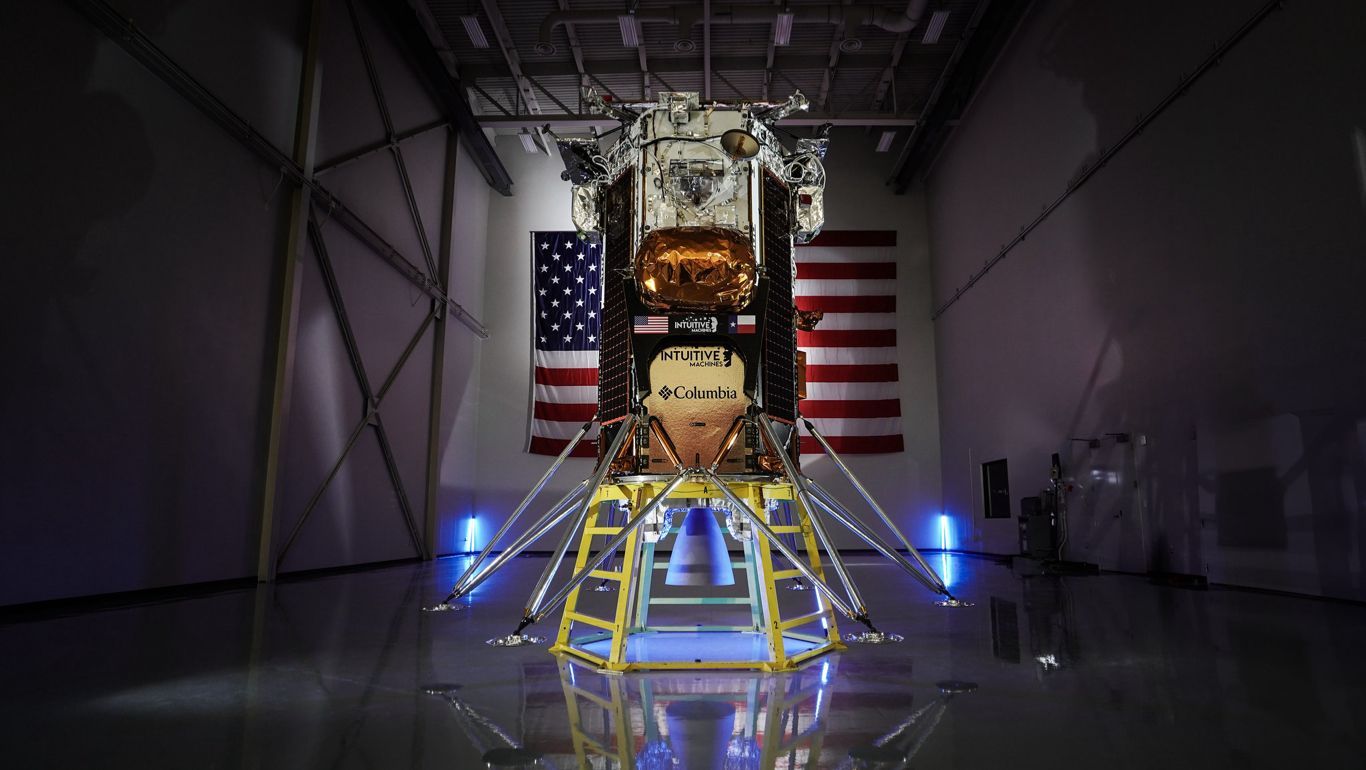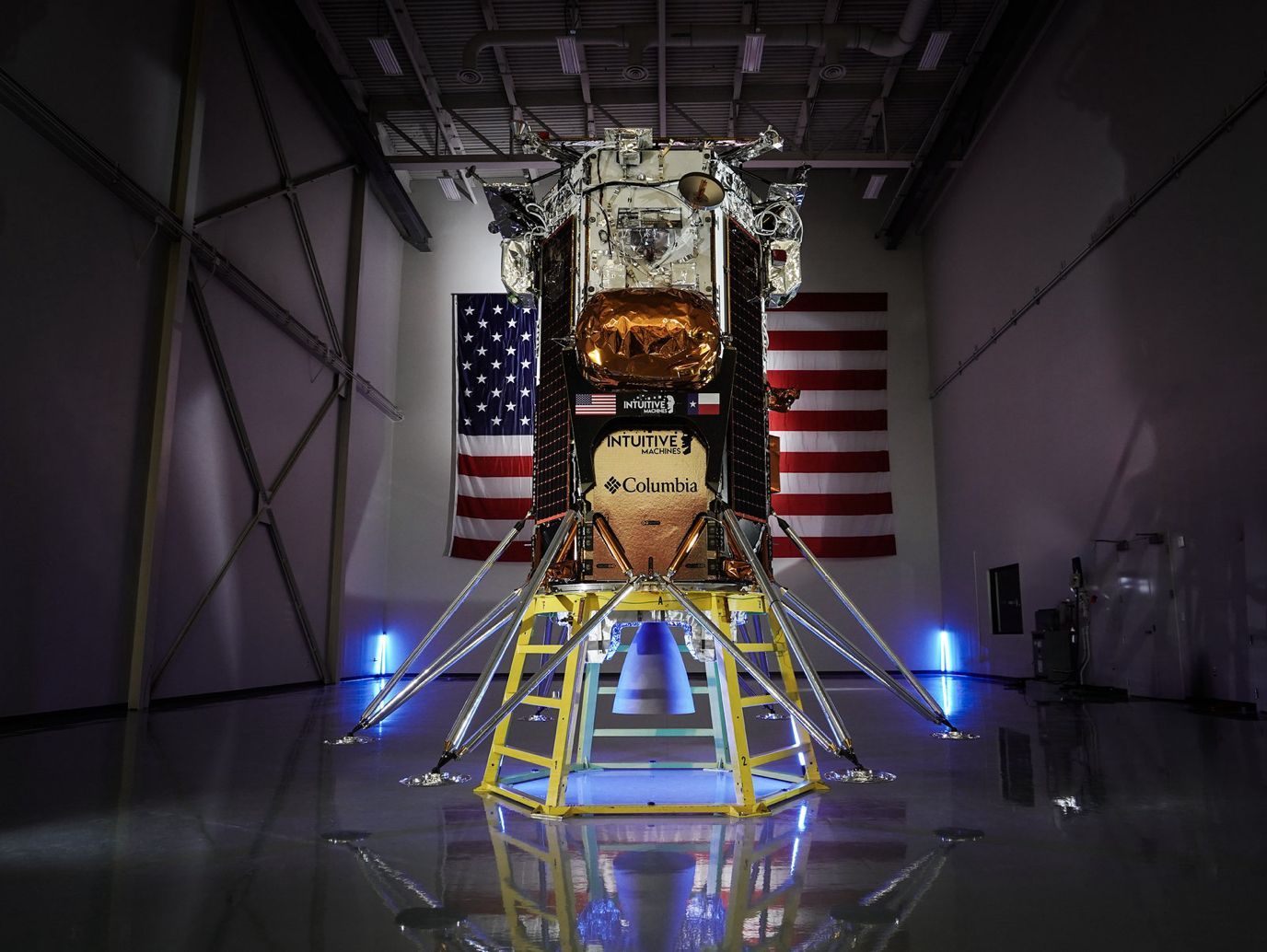24 December 2023

(Image - Adobe)
Global market intelligence company CoherentMI have published their Space Economy market report, which forecasts that the space economy will value over $1.1 trillion by 2030. They cite reasons being declining cost of accessing space through reusable launch systems, increasing demand for satellite technology, and the surge in private investment.
Forecasting has differed in the past, with Citigroup previously estimating that a 1 trillion valuation wouldn’t emerge until a decade later, in 2040. However, a more rapid growth outlook may be closer to the truth, should we consider the growing demand for space services, but also the pace of private sector innovation and increasing competition.
Even as the year draws to a close, we can see some evidence of this, from both new and established space nations.
UK set for vertical launch, Chinese commercial launch startup bags funding
The UK reached another milestone in its quest to become a hub for European spacelaunch. SaxaVord Spaceport in Scotland has been given permission from the Civil Aviation Authority to begin orbital launches in 2024, and become the first licensed to do so in Western Europe.
A number of companies are lining-up to carry out launches from the UK, including Skyrora (UK), Rocket Factory Augsburg (Germany) and Hylmpulse (Germany), with latter looking to carry out a suborbital launch in August next year. This won’t be the only site, with seven in total planned in the UK, with more sites planned in Scotland and Wales, as well as an established spaceport in Cornwall, England.
The Cornwall port was the site of the failed Virgin Orbit satellite launch in January, which led to its subsequent bankruptcy. However, on December 14 the UK Space Agency released their report outlining the lessons learnt from the launch, stating that despite the failure, “this historic event demonstrated the UK’s ability to launch, safely, legally and with the appropriate coordination across government.” The UK remains ambitious on its quest to become a leader in New Space.
China have also recently been expanding their footprint in the commercial launch market, with recent launches and demonstrations from startups I-Space and Landspsace. In addition, launch startup Galactic Energy has secured a notable funding round of $154 million, to be used for the development of its reusable Pallas-1 medium-lift rocket. The company also hope to secure contracts to launch China’s anticipated 13,000 satellite megaconstellation, Guowang.
European startup developing 3D-printing in-orbit, Axiom to send data centres to space station
Another key element driving the pace of growth of the space economy is the diversification of applications, from increased demand for LEO satellite technology, to orbital servicing, off-world resource extraction and in-space manufacturing.
Polish-based Orbital Matter have announced that they have secured additional funding towards the development of its own 3D-printing satellite, designed to manufacture cost-effective vehicle parts and space infrastructure in-orbit. Such technology has the potential to drastically reduce the cost of constructing the new orbital infrastructure, in not having to launch materials from Earth, and to utilise the benefits of the space vacuum for the manufacturing of delicate materials.
Additionally, space infrastructure company Axiom Space are to demonstrate an orbital data centre on their upcoming commercial space station. Axiom are due to launch the first modules of the station in 2026, and the company will partner with Kepler Communications US and Skyloom Global to develop optical inter-satellite links (OISLs) on the station. Using the Skyloom and Kepler constellations, data would be to be transmitted through the data centre, and help build the infrastructure required to support in-space services without having to connect to terrestrial cloud services.
In-space manufacturing and establishing independant communications in-orbit are all part of the ongoing growth of a new orbital infrastructure, allowing for more effective and sustainable space services for Earthbound proposes, but also as a relay platform for spacecraft to embark on deep space journeys.

Completed IM-1 lander (Image - Intuitive Machines)
Intuitive Machines delay sets up prospect of lunar race, Lonestar to establish data centres on the Moon
There were more developments regarding the highly anticipated Moon race between two US lander startups; Intuitive Machines and Astrobotic. The former has this week announced a delay to their launch schedule, meaning that they will now be aiming for a mid-February launch, lining it up with a similar landing date as its competitor.
Astrobotic are set for launch on January 8, but will take a longer journey to the Moon, aiming to land around February 23. In contrast, Intuitive Machines will launch much later, but take a shorter journey, meaning the a race to become the first successful commercial lunar landing could be back on the cards.
2024 could be a year we look back on as the turning point, not only for lunar missions, but the beginning of a commercial era for the Moon, with Intuitive Machines planning up to three missions, Astrobotic aiming to send two, and Japan’s iSpace aiming to make a second landing attempt, after their failed mission in April this year.
Lonestar take steps towards lunar data centres, NASA demonstrate asteroid laser connectivity
One payload that will be carried on Intuitive Machines first launch (IM-1) will be another data centre, developed by Lonestar Data Holdings (US). The idea behind the centres is to provide data recovery as a service (DRaaS), with the Moon providing protection from natural or manmade disasters. During the first mission, they will transmit US Declaration of Independence to the lunar surface as the first document ever to be digitally stored there. In return, the data centre will transmit the Bill of Rights back to Earth.
They’re also planning their second mission, set for 2024, where they will test disaster recovery services for the state of Florida.
NASA also demonstrated breakthrough technology with their Deep Space Optical Communications experiment on December 11, which involved beaming a high definition video from 19 million miles away, setting a new record. The video was beamed from NASA’s Psyche spacecraft, which is currently travelling to an asteroid of the same name, but en-route carried out the demonstration, which what NASA JPL describe as having the means of paving the way for “higher-data-rate communications capable of sending complex scientific information, high-definition imagery, and video in support of humanity’s next giant leap: sending humans to Mars.”
Innovations and recent developments from companies such as Orbital Matter and Lonestar, as well as agencies such as NASA, tell us more about just how and why the space economy is set to grow at such a pace; building space-based services and expanding humanity’s footprint into outer space.
Our future in space

Could US establish exclusion zones around landing sites? (Image - Adobe)
24 December 2023
Anticipating a Trillion-Dollar New Space Era, Scotland Secures Spaceport License and Companies Gear Up for February Commercial Moon Race - Space News Roundup
Global market intelligence company CoherentMI have published their Space Economy market report, which forecasts that the space economy will value over $1.1 trillion by 2030. They cite reasons being declining cost of accessing space through reusable launch systems, increasing demand for satellite technology, and the surge in private investment.
Forecasting has differed in the past, with Citigroup previously estimating that a 1 trillion valuation wouldn’t emerge until a decade later, in 2040. However, a more rapid growth outlook may be closer to the truth, should we consider the growing demand for space services, but also the pace of private sector innovation and increasing competition.
Even as the year draws to a close, we can see some evidence of this, from both new and established space nations.
UK set for vertical launch, Chinese commercial launch startup bags funding
The UK reached another milestone in its quest to become a hub for European spacelaunch. SaxaVord Spaceport in Scotland has been given permission from the Civil Aviation Authority to begin orbital launches in 2024, and become the first licensed to do so in Western Europe.
A number of companies are lining-up to carry out launches from the UK, including Skyrora (UK), Rocket Factory Augsburg (Germany) and Hylmpulse (Germany), with latter looking to carry out a suborbital launch in August next year. This won’t be the only site, with seven in total planned in the UK, with more sites planned in Scotland and Wales, as well as an established spaceport in Cornwall, England.
The Cornwall port was the site of the failed Virgin Orbit satellite launch in January, which led to its subsequent bankruptcy. However, on December 14 the UK Space Agency released their report outlining the lessons learnt from the launch, stating that despite the failure, “this historic event demonstrated the UK’s ability to launch, safely, legally and with the appropriate coordination across government.” The UK remains ambitious on its quest to become a leader in New Space.
China have also recently been expanding their footprint in the commercial launch market, with recent launches and demonstrations from startups I-Space and Landspsace. In addition, launch startup Galactic Energy has secured a notable funding round of $154 million, to be used for the development of its reusable Pallas-1 medium-lift rocket. The company also hope to secure contracts to launch China’s anticipated 13,000 satellite megaconstellation, Guowang.
European startup developing 3D-printing in-orbit, Axiom to send data centres to space station
Another key element driving the pace of growth of the space economy is the diversification of applications, from increased demand for LEO satellite technology, to orbital servicing, off-world resource extraction and in-space manufacturing.
Polish-based Orbital Matter have announced that they have secured additional funding towards the development of its own 3D-printing satellite, designed to manufacture cost-effective vehicle parts and space infrastructure in-orbit. Such technology has the potential to drastically reduce the cost of constructing the new orbital infrastructure, in not having to launch materials from Earth, and to utilise the benefits of the space vacuum for the manufacturing of delicate materials.
Additionally, space infrastructure company Axiom Space are to demonstrate an orbital data centre on their upcoming commercial space station. Axiom are due to launch the first modules of the station in 2026, and the company will partner with Kepler Communications US and Skyloom Global to develop optical inter-satellite links (OISLs) on the station. Using the Skyloom and Kepler constellations, data would be to be transmitted through the data centre, and help build the infrastructure required to support in-space services without having to connect to terrestrial cloud services.
In-space manufacturing and establishing independant communications in-orbit are all part of the ongoing growth of a new orbital infrastructure, allowing for more effective and sustainable space services for Earthbound proposes, but also as a relay platform for spacecraft to embark on deep space journeys.

Completed IM-1 lander (Image - Intuitive Machines)
Intuitive Machines delay sets up prospect of lunar race, Lonestar to establish data centres on the Moon
There were more developments regarding the highly anticipated Moon race between two US lander startups; Intuitive Machines and Astrobotic. The former has this week announced a delay to their launch schedule, meaning that they will now be aiming for a mid-February launch, lining it up with a similar landing date as its competitor.
Astrobotic are set for launch on January 8, but will take a longer journey to the Moon, aiming to land around February 23. In contrast, Intuitive Machines will launch much later, but take a shorter journey, meaning the a race to become the first successful commercial lunar landing could be back on the cards.
2024 could be a year we look back on as the turning point, not only for lunar missions, but the beginning of a commercial era for the Moon, with Intuitive Machines planning up to three missions, Astrobotic aiming to send two, and Japan’s iSpace aiming to make a second landing attempt, after their failed mission in April this year.
Lonestar take steps towards lunar data centres, NASA demonstrate asteroid laser connectivity
One payload that will be carried on Intuitive Machines first launch (IM-1) will be another data centre, developed by Lonestar Data Holdings (US). The idea behind the centres is to provide data recovery as a service (DRaaS), with the Moon providing protection from natural or manmade disasters. During the first mission, they will transmit US Declaration of Independence to the lunar surface as the first document ever to be digitally stored there. In return, the data centre will transmit the Bill of Rights back to Earth.
They’re also planning their second mission, set for 2024, where they will test disaster recovery services for the state of Florida.
NASA also demonstrated breakthrough technology with their Deep Space Optical Communications experiment on December 11, which involved beaming a high definition video from 19 million miles away, setting a new record. The video was beamed from NASA’s Psyche spacecraft, which is currently travelling to an asteroid of the same name, but en-route carried out the demonstration, which what NASA JPL describe as having the means of paving the way for “higher-data-rate communications capable of sending complex scientific information, high-definition imagery, and video in support of humanity’s next giant leap: sending humans to Mars.”
Innovations and recent developments from companies such as Orbital Matter and Lonestar, as well as agencies such as NASA, tell us more about just how and why the space economy is set to grow at such a pace; building space-based services and expanding humanity’s footprint into outer space.
Share this article
24 December 2023
Anticipating a Trillion-Dollar New Space Era, Scotland Secures Spaceport License and Companies Gear Up for February Commercial Moon Race - Space News Roundup

(Image - Adobe)
Global market intelligence company CoherentMI have published their Space Economy market report, which forecasts that the space economy will value over $1.1 trillion by 2030. They cite reasons being declining cost of accessing space through reusable launch systems, increasing demand for satellite technology, and the surge in private investment.
Forecasting has differed in the past, with Citigroup previously estimating that a 1 trillion valuation wouldn’t emerge until a decade later, in 2040. However, a more rapid growth outlook may be closer to the truth, should we consider the growing demand for space services, but also the pace of private sector innovation and increasing competition.
Even as the year draws to a close, we can see some evidence of this, from both new and established space nations.
UK set for vertical launch, Chinese commercial launch startup bags funding
The UK reached another milestone in its quest to become a hub for European spacelaunch. SaxaVord Spaceport in Scotland has been given permission from the Civil Aviation Authority to begin orbital launches in 2024, and become the first licensed to do so in Western Europe.
A number of companies are lining-up to carry out launches from the UK, including Skyrora (UK), Rocket Factory Augsburg (Germany) and Hylmpulse (Germany), with latter looking to carry out a suborbital launch in August next year. This won’t be the only site, with seven in total planned in the UK, with more sites planned in Scotland and Wales, as well as an established spaceport in Cornwall, England.
The Cornwall port was the site of the failed Virgin Orbit satellite launch in January, which led to its subsequent bankruptcy. However, on December 14 the UK Space Agency released their report outlining the lessons learnt from the launch, stating that despite the failure, “this historic event demonstrated the UK’s ability to launch, safely, legally and with the appropriate coordination across government.” The UK remains ambitious on its quest to become a leader in New Space.
China have also recently been expanding their footprint in the commercial launch market, with recent launches and demonstrations from startups I-Space and Landspsace. In addition, launch startup Galactic Energy has secured a notable funding round of $154 million, to be used for the development of its reusable Pallas-1 medium-lift rocket. The company also hope to secure contracts to launch China’s anticipated 13,000 satellite megaconstellation, Guowang.
European startup developing 3D-printing in-orbit, Axiom to send data centres to space station
Another key element driving the pace of growth of the space economy is the diversification of applications, from increased demand for LEO satellite technology, to orbital servicing, off-world resource extraction and in-space manufacturing.
Polish-based Orbital Matter have announced that they have secured additional funding towards the development of its own 3D-printing satellite, designed to manufacture cost-effective vehicle parts and space infrastructure in-orbit. Such technology has the potential to drastically reduce the cost of constructing the new orbital infrastructure, in not having to launch materials from Earth, and to utilise the benefits of the space vacuum for the manufacturing of delicate materials.
Additionally, space infrastructure company Axiom Space are to demonstrate an orbital data centre on their upcoming commercial space station. Axiom are due to launch the first modules of the station in 2026, and the company will partner with Kepler Communications US and Skyloom Global to develop optical inter-satellite links (OISLs) on the station. Using the Skyloom and Kepler constellations, data would be to be transmitted through the data centre, and help build the infrastructure required to support in-space services without having to connect to terrestrial cloud services.
In-space manufacturing and establishing independant communications in-orbit are all part of the ongoing growth of a new orbital infrastructure, allowing for more effective and sustainable space services for Earthbound proposes, but also as a relay platform for spacecraft to embark on deep space journeys.

Completed IM-1 lander (Image - Intuitive Machines)
Intuitive Machines delay sets up prospect of lunar race, Lonestar to establish data centres on the Moon
There were more developments regarding the highly anticipated Moon race between two US lander startups; Intuitive Machines and Astrobotic. The former has this week announced a delay to their launch schedule, meaning that they will now be aiming for a mid-February launch, lining it up with a similar landing date as its competitor.
Astrobotic are set for launch on January 8, but will take a longer journey to the Moon, aiming to land around February 23. In contrast, Intuitive Machines will launch much later, but take a shorter journey, meaning the a race to become the first successful commercial lunar landing could be back on the cards.
2024 could be a year we look back on as the turning point, not only for lunar missions, but the beginning of a commercial era for the Moon, with Intuitive Machines planning up to three missions, Astrobotic aiming to send two, and Japan’s iSpace aiming to make a second landing attempt, after their failed mission in April this year.
Lonestar take steps towards lunar data centres, NASA demonstrate asteroid laser connectivity
One payload that will be carried on Intuitive Machines first launch (IM-1) will be another data centre, developed by Lonestar Data Holdings (US). The idea behind the centres is to provide data recovery as a service (DRaaS), with the Moon providing protection from natural or manmade disasters. During the first mission, they will transmit US Declaration of Independence to the lunar surface as the first document ever to be digitally stored there. In return, the data centre will transmit the Bill of Rights back to Earth.
They’re also planning their second mission, set for 2024, where they will test disaster recovery services for the state of Florida.
NASA also demonstrated breakthrough technology with their Deep Space Optical Communications experiment on December 11, which involved beaming a high definition video from 19 million miles away, setting a new record. The video was beamed from NASA’s Psyche spacecraft, which is currently travelling to an asteroid of the same name, but en-route carried out the demonstration, which what NASA JPL describe as having the means of paving the way for “higher-data-rate communications capable of sending complex scientific information, high-definition imagery, and video in support of humanity’s next giant leap: sending humans to Mars.”
Innovations and recent developments from companies such as Orbital Matter and Lonestar, as well as agencies such as NASA, tell us more about just how and why the space economy is set to grow at such a pace; building space-based services and expanding humanity’s footprint into outer space.
Share this article
External Links
This Week
*News articles posted here are not property of ANASDA GmbH and belong to their respected owners. Postings here are external links only.










